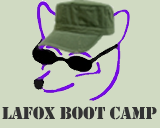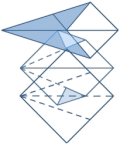
Visual FoxPro 9 Report Writer In Depth
VFP 9.0 Reporting Fundamentals
Extending VFP 9.0 Xbase Reporting Components
You'll see how to build a preview extension, how to manage the ReportListeners that VFP invokes by default for various types of output, and how to add some features to the Builder. We'll also take a look at the Protection feature, which you can use to make reporting more fun for end users.
We'll look at various ways that you can use ReportBuilder hooks to personalize the report design experience, in ways appropriate to both developers and end-users.
Reporting in Sedna/SP2 - A Tour
We'll discuss performance enhancements in both the Xbase components and SP2 base product, and other bonus enhancements such as new file-handling output features in the FFC ReportListeners.
Data Visualization in Reports with VFP 9.0 SP2
Getting the Most Out of Reporting in VFP
We will discuss appropriate use of external data sources, such as SQL Server and MySQL, and the ways that cursoradapters and improvements to dataenvironment class handling in VFP 9 reports fit into an external data strategy. You will learn about useful ways to expose data in multiple data sources, using multiple detail bands, and see some additional tricks that multiple detail bands can perform. Next, we'll consider what you need to know to deploy VFP HTML and XML reports in web server scenarios.
Time permitting, we'll include a quick examination of the VFP-RDL (the XML report output schema), as a rich, intermediate reporting format with many uses beyond HTML.
VFP Migrations: Many stops on a tour
We think of this session as "the session-and-a-half". We are going
to speak frankly about several aspects of a very large subject: what happens
when your users hand you a FoxPro application and ask for massive change?
First, we'll quickly run through something we like to call "Migrating FoxPro
for Windows 2.x applications to VFP in a Day". It's a story of a large, poorly
written FoxPro for Windows 2.x application, why it had to be up-migrated,
and how we did it, including various interesting aspects of migrating its
large and critical reporting subsystems to the VFP 9 Reporting system.
Is the approach we're going to show you the only way to migrate an application? No, of course it's not. There are other ways - when you have time, money, and user approval for re-architecting. What we'll show you is one ruthless way you can use when you don't have those things.
While we think this scenario will continue happening in all our lives for some times, its real significance is the attitude with which we face other migration issues in the future. So after reviewing it briefly, and with this context, we'll turn to that future. We'll consider some aspects of migrating, or blending, VFP code to use upcoming Microsoft technologies. No matter what your users' latest request and how that request has been put to you... what's likely to work well, and what isn't, and why? What really matters, and what doesn't?
Disclaimer: We have demonstrations of working techniques, opinions, suggestions, and tips. Since we are self-employed, the opinions do reflect our employer <g>. They also reflect our continuing interest in the use of XML for integration scenarios and our research on this topic, as commissioned by Microsoft. They do not, in certain cases, match Microsoft's idea of what the future should look like, and they most certainly do not reflect a crystal ball. Feel free to argue <g>.

